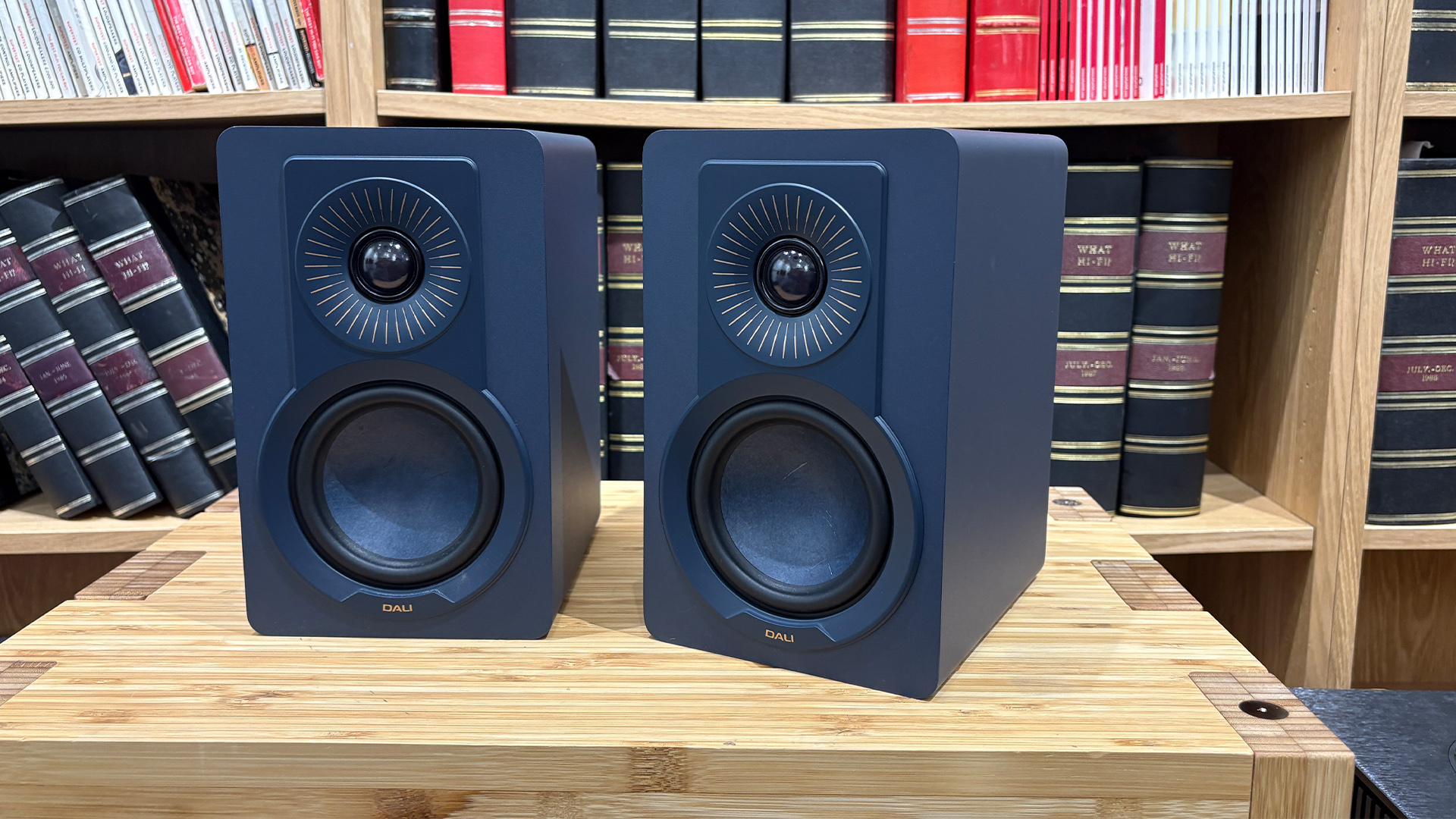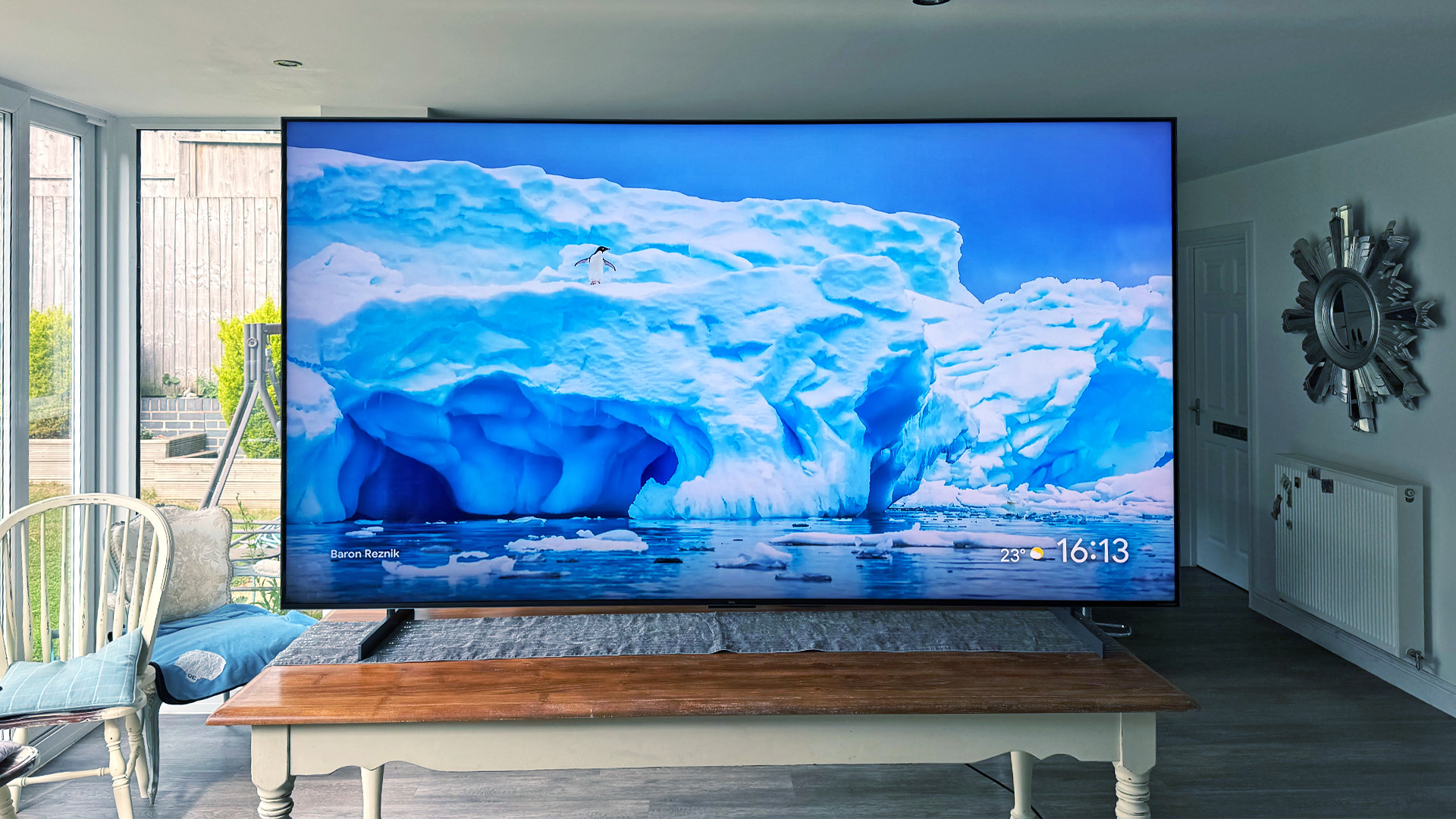What Hi-Fi? Verdict
A great choice for small, modern music systems, the entertaining Dali Kupid speakers will win over many hearts
Pros
- +
Lively, entertaining and rhythmically agile
- +
Dynamic, detailed and punchy sound
- +
Compact, appealing design; Flexible positioning
Cons
- -
Build quality feels quite “budget” compared with traditional rivals
- -
Low sensitivity rating
Why you can trust What Hi-Fi?
With their bold colour palette, eye-catching design and space-friendly compact form, the new Dali Kupid speakers are made to appeal to a wider audience of music fans.
The Kupid are designed to fit into people’s spaces easily and be used with modern compact hi-fi, micro systems or as TV speakers. Indeed, part of our testing period was spent hooking the Kupid speakers up to the WiiM Amp Ultra streaming amplifier we also have in for testing – and the pair showed just how simple, compact and streamlined a modern hi-fi system can be.
And affordable, too. The Dali Kupid are priced at £299 / $600 / AU$599 per pair – that puts them right up against the Award-winning Wharfedale Diamond 12.1 (£249 / $399 / AU$699).
Considering the Danish brand has spent the last handful of years focusing on the higher echelons of the high-end hi-fi scale – from the flagship Kore and Epikore speakers, to the premium IO-8 wireless headphones – this is a welcome return to the budget speaker market.
Dali’s wallet-friendly Lektor, Zensor and Spektor ranges have entertained us in the past with their enjoyable, dynamic sound from compact forms, and the new Kupid model is cut from the same cloth.
Build & design
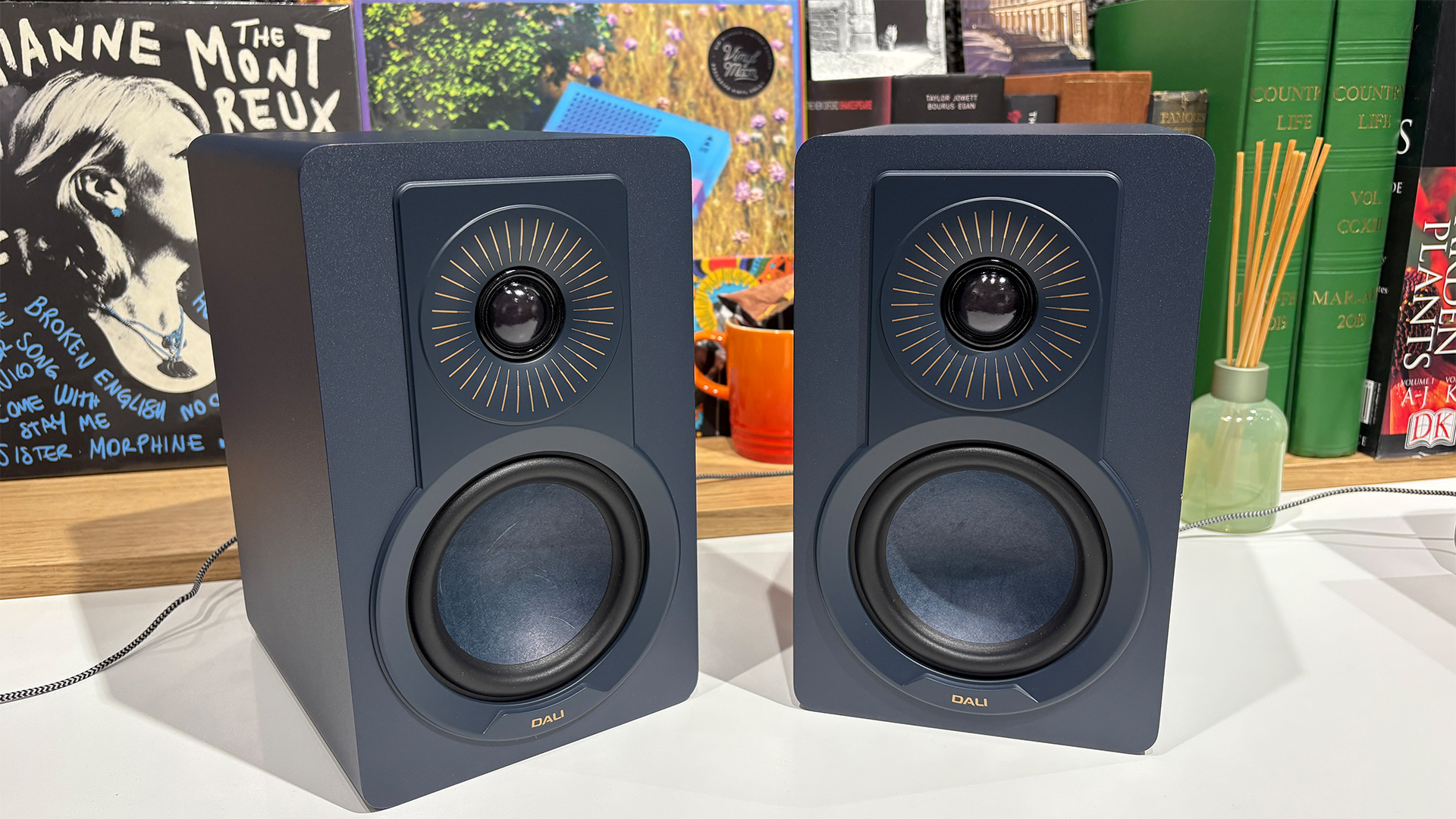
While they’re not as titchy as the Neat Iota II speakers, the Dali Kupid are small speakers that are designed to be placed just about anywhere. Standing 23.7cm tall and 14cm wide, they are a little bigger than desktop speakers such as the Ruark MR1 Mk3, but are still a fair bit more compact than standard small speakers such as the B&W 607 S3 and Neat Petite Classic.
This means they can be placed on desks, cabinets, bookshelves, TV stands or large windowsills rather than on dedicated speaker stands, and are especially suited to those with limited space. You can even wall-mount them, with the required wall brackets and fixing screws included in the box – helpful!
The latest hi-fi, home cinema and tech news, reviews, buying advice and deals, direct to your inbox.
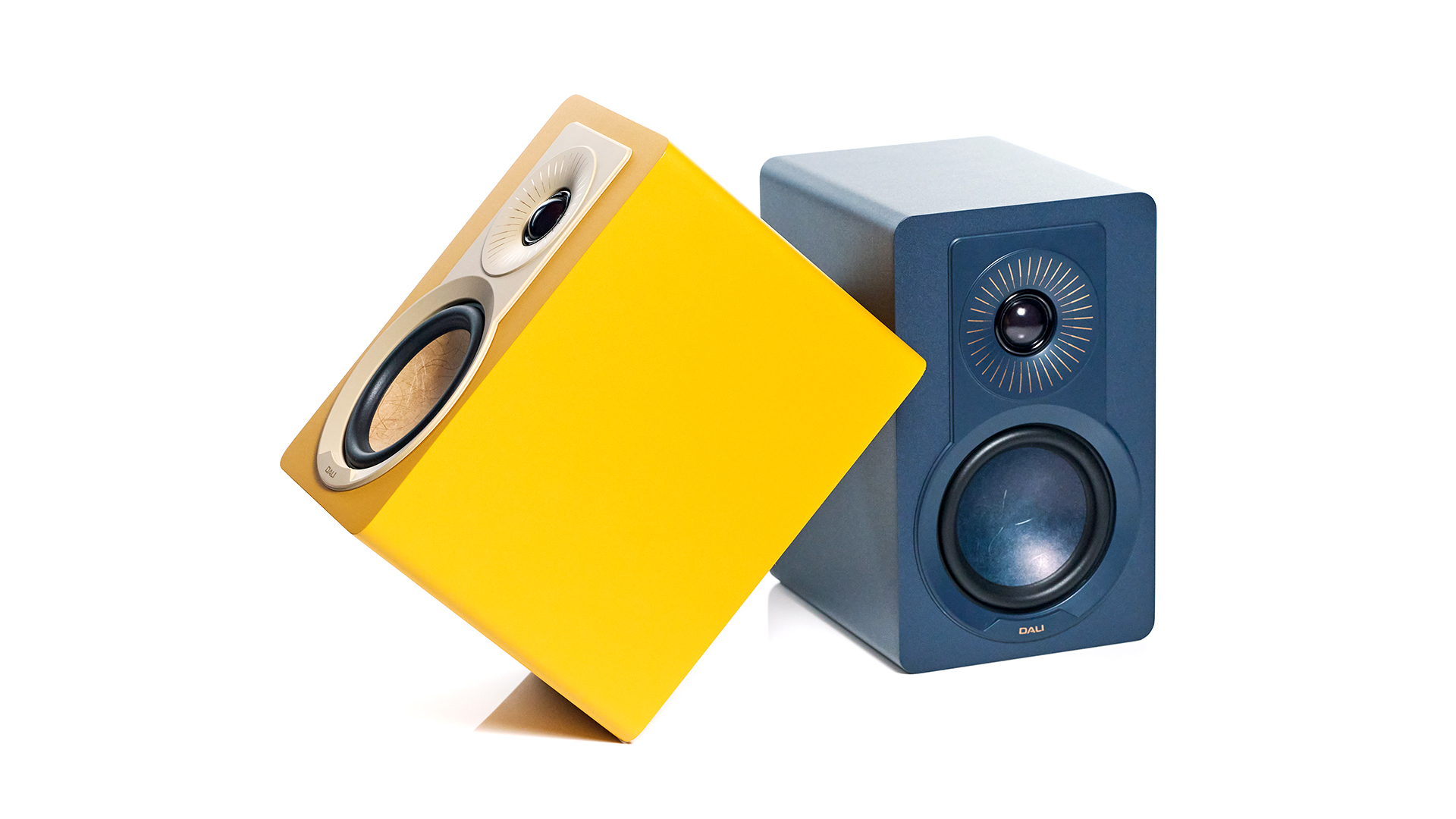
Type Standmounts
Drive units 26mm soft dome tweeter; 11.4cm paper and wood fibre mid/bass driver
Ported? Yes (rear)
Bi-wire? No
Impedance 4 ohms
Sensitivity 83dB
Dimensions (hwd) 23.7 x 14 x 19.5cm
Weight 5.8kg
Finishes x 5 (black ash, caramel white, dark walnut, chilly blue, golden yelllow)
The overall build quality is good, with smooth curves and a neat finish, while its lightweight frame speaks to its budget billing. But these aren’t plain Janes. We really like the styling of these speakers – they come in colourful shades that set them apart from the traditional hi-fi speaker crowd.
Our review sample comes in an appealing “chilly blue” finish, but you can also choose from a bright “golden yellow” or subtler shades of black, white and walnut. Those starburst lines radiating from the tweeter are a lovely design flourish and are present in every colourway, with the contrasting gold detail standing out on our blue sample in particular.
Compared with the brand’s own Zensor and Spektor speakers or their main rival, the long-running Wharfedale Diamond 12.1, the Kupid’s build does feel a little on the ‘budget’ side. The Diamonds are sturdier and have a more refined build quality with their wood finish, but they are also larger and more traditional-looking. The Kupid are clearly aiming for a different (and most likely younger) audience who are looking for something fresher and more modern.
Underneath that more accessible outlook lies Dali’s decades of acoustic engineering expertise, with the Kupid speakers promising to deliver a rich performance from such a compact form and at this price level.
The two-way speakers feature a 26mm “ultra-light” soft dome tweeter and an 11.4cm mid/bass driver made from a paper and wood fibre material that Dali has long used in its speakers. The dished tweeter waveguide is shaped to help integration with the midrange driver, and the custom crossovers are designed to deliver accurate timing overall.
There is a “dual flare” reflex port at the back of the cabinet that optimises airflow, minimises turbulence and aims to deliver deep bass from this compact cabinet size. It’s all very sensible, and there are magnetic grilles included in the box to protect the drivers.
Compatibility
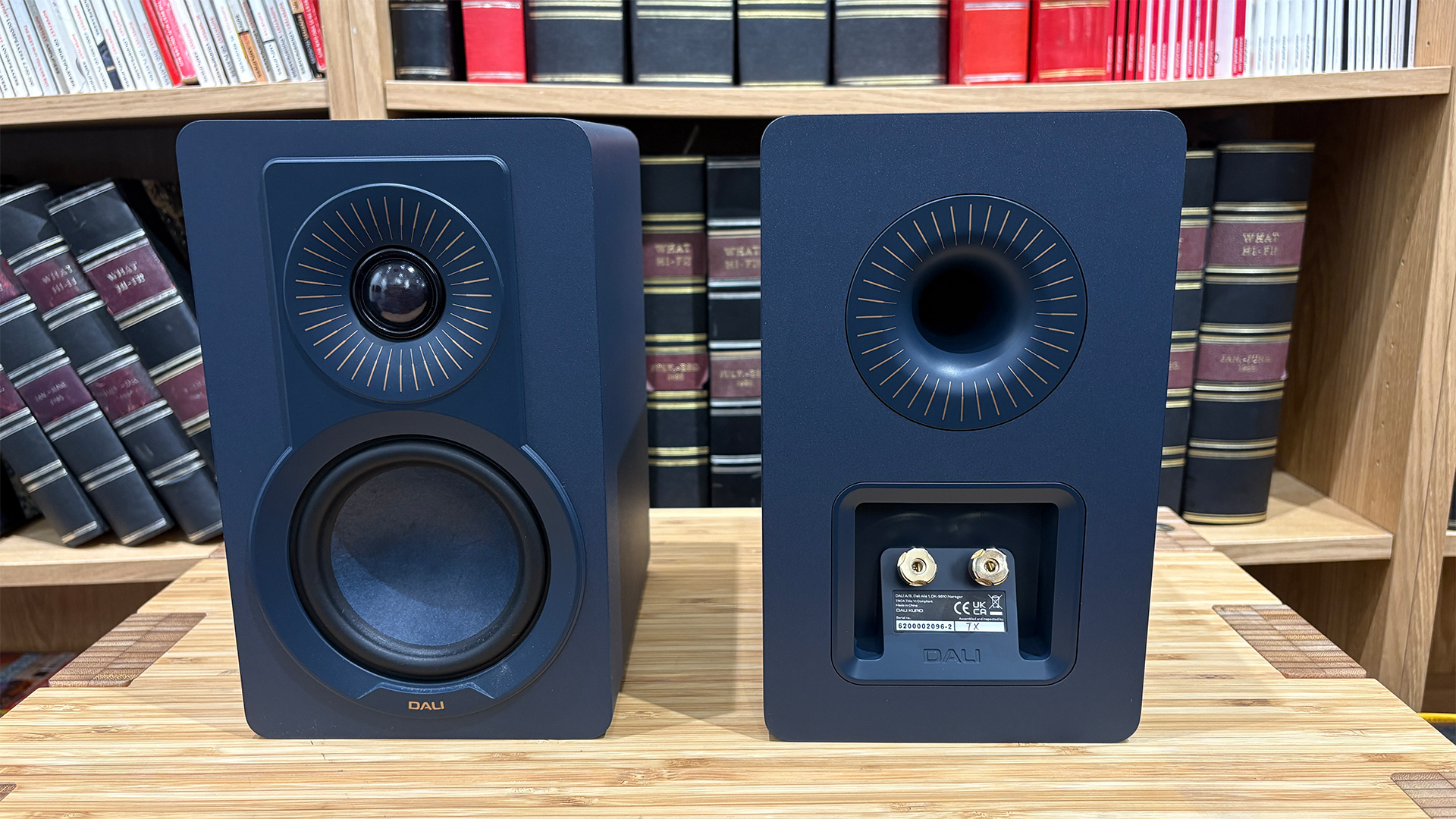
The Kupids have a rather low sensitivity of 83dB to get enough bass extension out of such compact speakers, which is a balancing act Dali has done before in its Spektor 1 standmounts.
Despite this figure, we found they were easy enough to drive with most amplifiers we tried during testing, and got good volume levels out of them. The Kupids start to complain just a little when pushed to party levels in our fairly large test room, but as these speakers will be used mostly in smaller spaces, this shouldn’t be much of a problem.
During our testing period, we had the Kupids plugged into our usual reference system of Naim Nait XS 3 amplifier and Cyrus CDi CD player. Shifting to more appropriately priced partners, we tried the Kupid with the Arcam A5 and Rotel A8 amps, and the budget Pro-Ject Primary E turntable and Bluesound Node Icon streamer as sources, and then finally connected the speakers straight into the one-box WiiM Amp Ultra streaming amplifier.
With all combinations throughout our testing time, the Kupid speakers more than hold their own and retain their innate lively character.
Sound
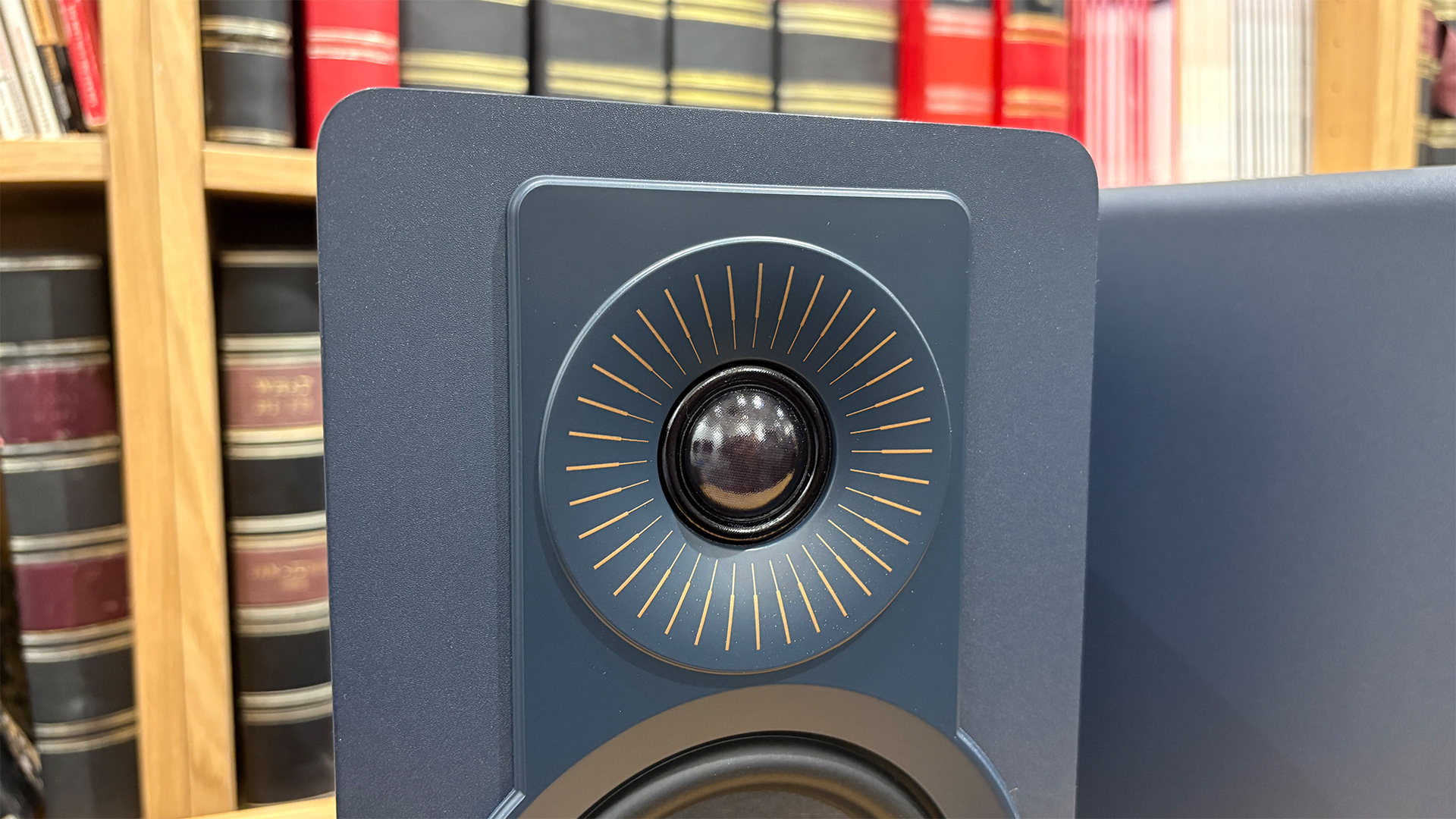
Right from the moment we hit play, the Kupid reveal a lively, nimble presentation that is packed with enthusiasm.
We have to accept they won’t deliver the hugest spread of sound or the deepest bass due to their cabinets’ physical constraints, but we find ourselves looking past any such limitations as the speakers themselves sound well balanced. They have a particularly expressive and solid midrange, with enough slam in the lower frequencies to contrast against the sweeter, more delicate moments.
They exhibit a knack for snappy timing and agile rhythm. From Kendrick Lamar’s King Kunta to Tunng’s Didn’t Know Why to the KPop Demon Hunters soundtrack, the Kupid have a fleet-footed quality that zips along with all kinds of tracks in an engaging manner.
The bassline in Rag’n’Bone Man’s Human sounds tuneful and agile enough to keep the track’s fierce momentum going, while the brooding quality and build-up of tension in Massive Attack’s Angel is felt thanks to spot-on timing and clear, precise edges to notes.
There’s enough space to allow instruments and textures to flourish, from the crunchy depth of a grungy guitar to the sweeping orchestral strings in the Game Of Thrones soundtrack.
Dynamically, the Kupids deliver the ebbs and flow of tracks with conviction, while also revealing subtler moments with a deft hand. The smooth, soulful quality of Marion Black’s 1970s hit Who Knows is full of richness and body; the hi-hats in Max Roach’s Lonesome Lover have enough fizz and snap without sounding thin, and that saxophone glides through with verve.
The Kupids do a great job in expressing the high drama and frenetic attitude of Fontaines D.C.’s Starburster, with those punctuating gasps in the chorus stopping and starting with alacrity. There’s ample excitement and solidity underpinning the high-octane track to get into the groove, but there is also no undue brashness at the top and no flab at the bottom.
Equally, the subtle differences in pressure on the piano keys in Erik Satie’s Gnossienne No.1 are delivered clearly, which is quite impressive for such budget speakers.
We particularly like how expressive, detailed and fluid the Kupids are in the midrange. Laura Marling’s strong yet intimate vocals in Hope In The Air are communicated with crystal clear focus and all the nuances and emotion in her singing are laid bare. Her voice hangs beautifully in the centre, against a fairly low-noise background.
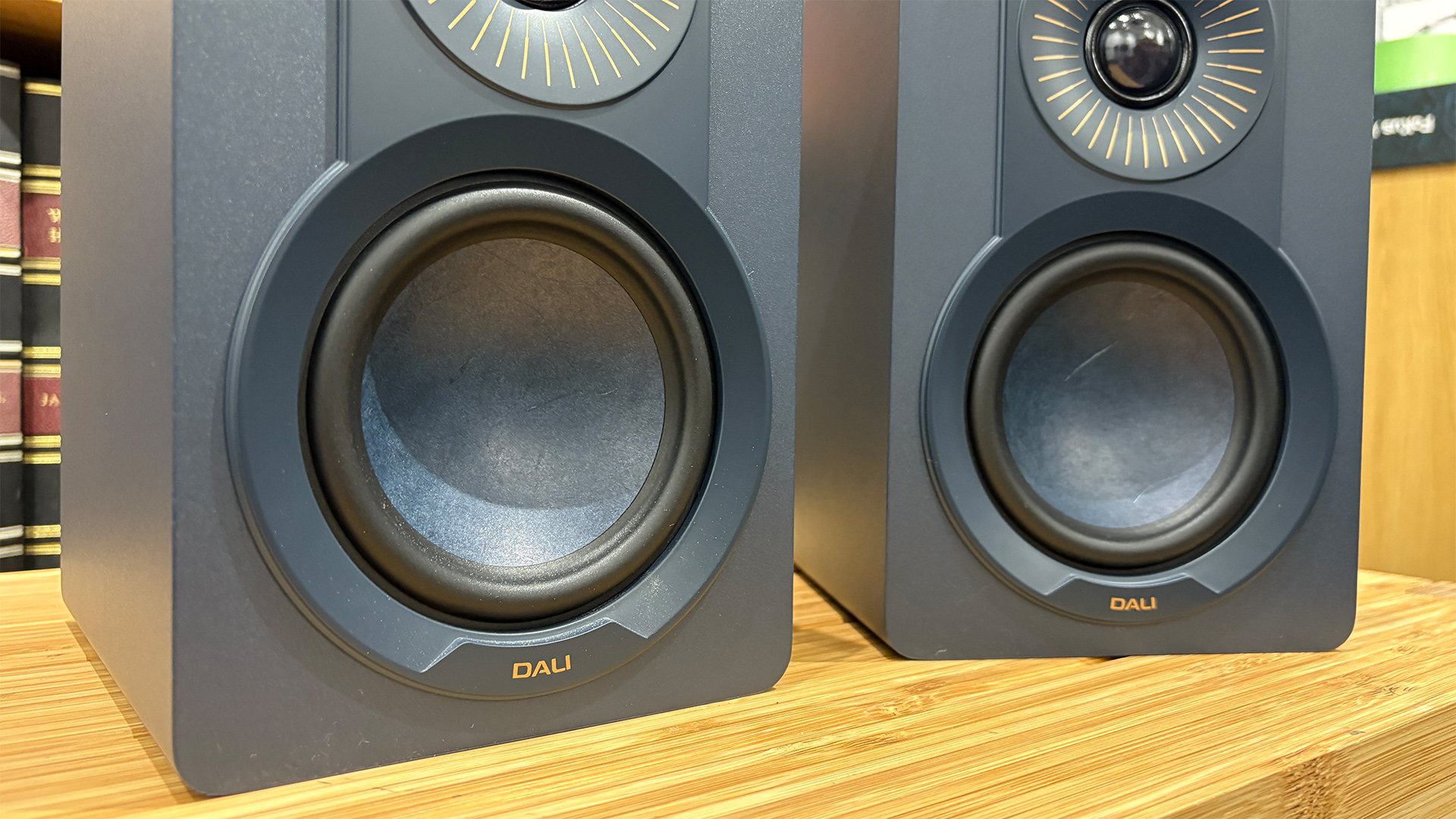
Play Still Dre and we find ourselves tapping our toes and snapping our fingers along to the melody, with the Kupids' infectious sense of enthusiasm and stellar sense of timing and agility keeping our attention hooked. Sure, those bass notes would hit deeper with bigger speakers, but we find that the Dali speakers deliver a satisfying amount of punch that keeps us entertained.
These are very capable performers for their modest price and size. We find ourselves listening to song after song and never get bored; the Kupids also allow the personality and tone of each recording era to come through with little fuss – something that even more expensive speakers struggle to do.
The Kupid speakers are livelier and more dynamically exciting than the Diamond 12.1 rivals, even if the larger speakers are more spacious and a touch more refined. The Kupids punch harder and win us over with their sure-footed rhythm and sheer sense of fun – sonic characteristics that have run through Dali’s previous budget speakers, and which we are delighted to hear resurrected here.
Verdict
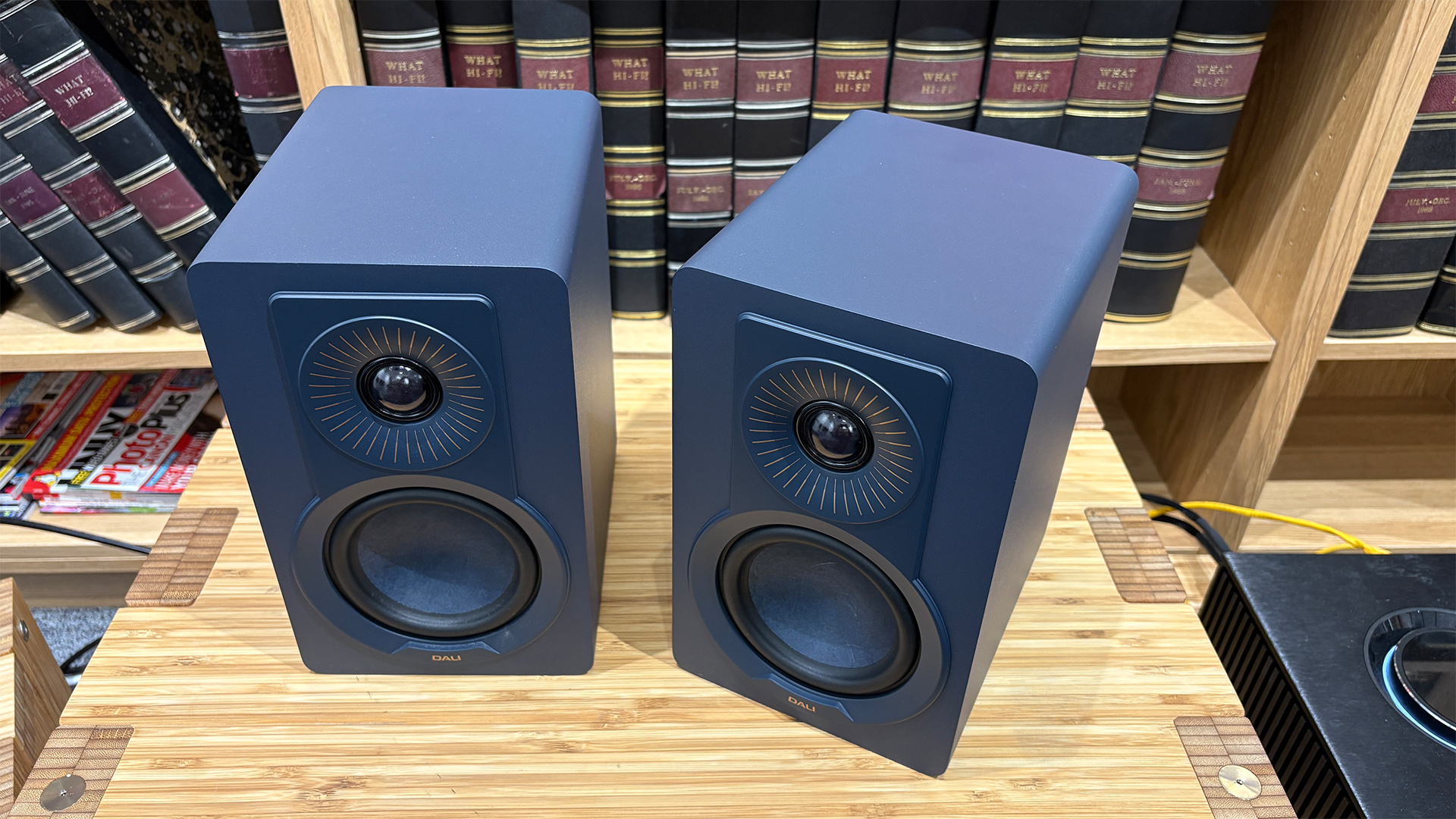
Dali has hit upon a winning combination in the Kupid speakers. Small size, attractive looks, entertaining sound and an affordable price – what more could you want?
Give them a whirl, and don’t be afraid to opt for the bolder, colourful finishes.
Review published: 1st October 2025
SCORES
- Sound 5
- Build 4
- Compatibility 4
MORE:
Also consider the Wharfedale Diamond 12.1
Read our Elac Debut B5.2 review
Our guide to the best bookshelf speakers for every budget

Kashfia is the Hi-Fi and Audio Editor of What Hi-Fi? and first joined the brand 13 years ago. During her time in the consumer tech industry, she has reviewed hundreds of products (including speakers, amplifiers, turntables and headphones), been to countless trade shows across the world and fallen in love with hi-fi kit much bigger than her. In her spare time, Kash can be found tending to an ever-growing houseplant collection and shooing her cat Jolene away from spinning records.
- Ketan BharadiaTechnical Editor
You must confirm your public display name before commenting
Please logout and then login again, you will then be prompted to enter your display name.
